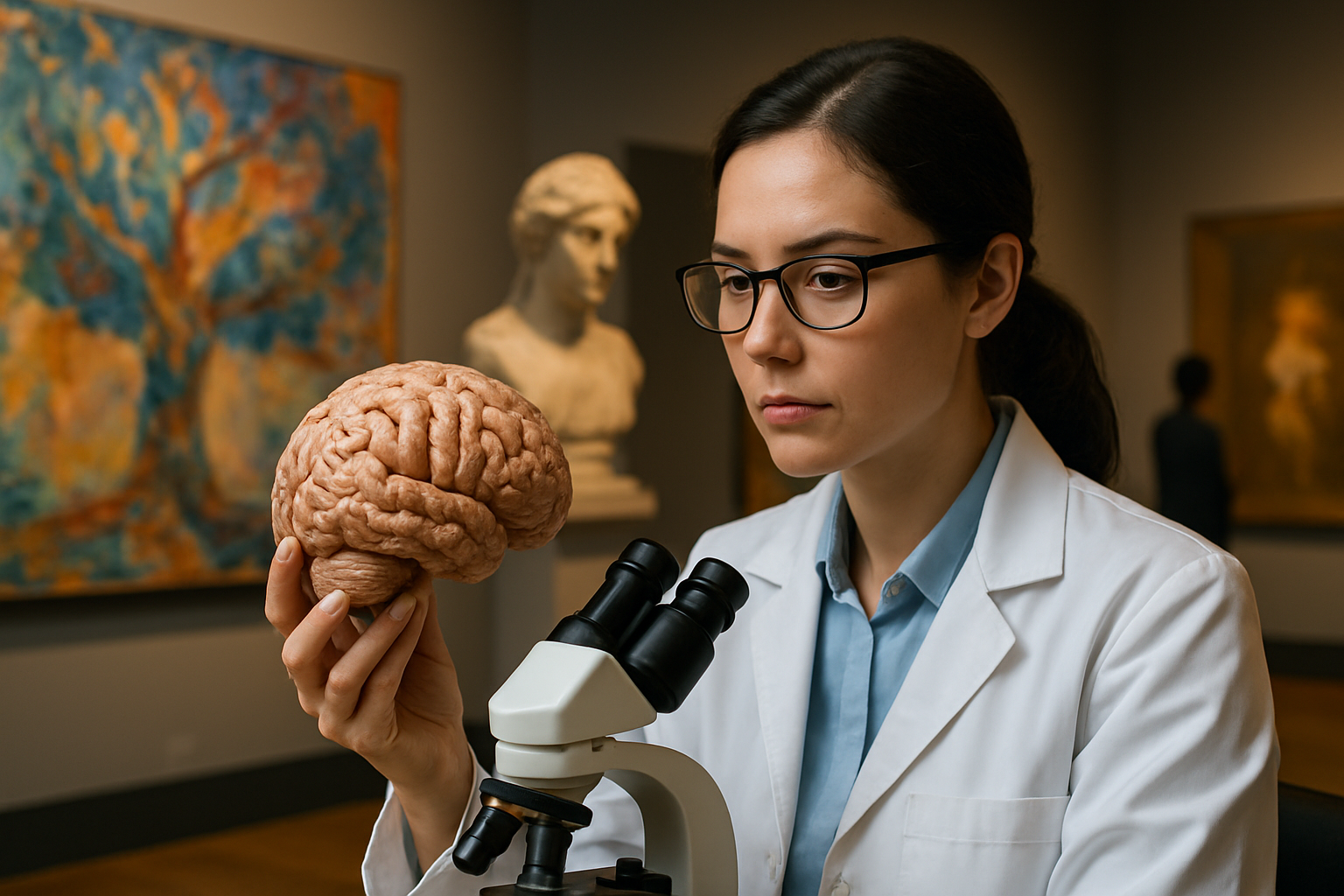Neuroaesthetics: Decoding Beauty in the Brain
The intersection of neuroscience and art unveils a captivating frontier in our understanding of human perception and creativity. Neuroaesthetics, an emerging field bridging neurobiology and the appreciation of beauty, offers profound insights into how our brains process and respond to artistic experiences. Read below to explore this fascinating domain where science meets aesthetics, reshaping our comprehension of art, perception, and the human mind.

The foundations of neuroaesthetics lie in the convergence of multiple scientific disciplines. Cognitive neuroscience provides the tools to map brain activity during aesthetic experiences. Psychology contributes theories of perception and emotion. Art history and philosophy offer context for understanding cultural and historical aspects of aesthetics. This interdisciplinary approach has led to groundbreaking discoveries about the neural mechanisms underlying our appreciation of art and beauty.
Neural Correlates of Aesthetic Experience
Recent neuroimaging studies have identified key brain regions involved in aesthetic experiences. The ventral visual pathway, responsible for object recognition, plays a crucial role in processing visual art. The orbitofrontal cortex, associated with reward and decision-making, activates when we find something beautiful. The anterior insula, linked to emotional experiences, engages during powerful aesthetic moments.
Interestingly, research shows that the brain’s reward system, including the nucleus accumbens, responds to beautiful artworks similarly to how it reacts to other pleasurable stimuli. This finding suggests that aesthetic experiences can be neurologically rewarding, potentially explaining why humans have created and sought out art throughout history.
The Role of Context and Culture
Neuroaesthetics also explores how cultural background and context influence aesthetic experiences. Studies have shown that expertise in art can alter brain responses, with art historians and critics showing different patterns of neural activation compared to novices when viewing artworks. This suggests that aesthetic appreciation is not purely innate but can be shaped by learning and experience.
Cultural differences in aesthetic preferences have also been observed at the neural level. For example, studies comparing Western and East Asian participants have found differences in brain activation patterns when viewing artworks from their respective cultures. These findings highlight the complex interplay between biology and culture in shaping our aesthetic experiences.
Implications for Art Creation and Appreciation
The insights gained from neuroaesthetics have profound implications for both artists and art enthusiasts. Understanding the neural mechanisms behind aesthetic experiences can inform new approaches to art creation. Some artists are already collaborating with neuroscientists to create works that specifically target certain brain regions or evoke particular neural responses.
For art appreciation, neuroaesthetics offers new ways to engage with artworks. Museums and galleries are beginning to incorporate findings from this field into their curation and education programs. By understanding how our brains process art, we can develop more effective strategies for enhancing aesthetic experiences and making art more accessible to diverse audiences.
Future Directions and Ethical Considerations
As neuroaesthetics continues to evolve, researchers are exploring new frontiers. The field is expanding beyond visual art to investigate the neural basis of musical appreciation, dance perception, and even the aesthetics of mathematical equations. Advances in neuroimaging techniques promise to provide even more detailed insights into the moment-by-moment neural processes involved in aesthetic experiences.
However, the growth of neuroaesthetics also raises important ethical questions. As we gain the ability to manipulate aesthetic experiences at the neural level, concerns arise about the potential for neuromarketing or the use of this knowledge to manipulate emotions and preferences. Balancing the pursuit of scientific understanding with ethical considerations will be crucial as the field advances.
In conclusion, neuroaesthetics represents a fascinating convergence of science and art, offering new perspectives on human creativity and perception. By unraveling the neural mechanisms behind our appreciation of beauty, this field not only deepens our understanding of the brain but also enriches our engagement with art and aesthetics in everyday life. As research in neuroaesthetics progresses, it promises to reshape our understanding of what it means to create and experience beauty, opening new avenues for artistic expression and appreciation in the 21st century and beyond.





